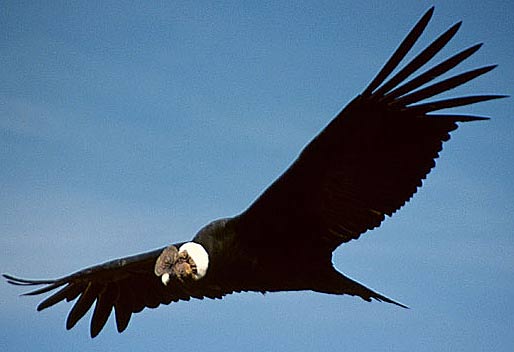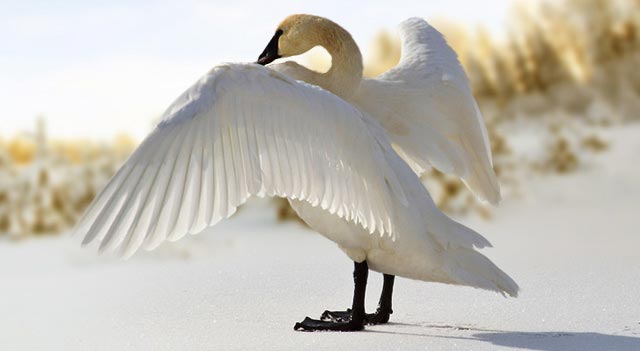

It has a black beak, long neck, and strong legs that allow it to travel long distances. It can measure about 1.90 meters (6.2 feet) in height, with a body mass between 30 and 40 kilograms (66 to 88 pounds). It’s part of the Dromaiidae family, and is an inhabitant of Australia. The emu, the second largest bird in the world, is another large running bird. In addition, its eggs are enormous, measuring around 25 centimeters (10 inches) and weighing up to 2 kilograms (4.4 pounds). It doesn’t only stand out for its size and weight, but also for being very fast, as it can reach between 60 and 70 kilometers per hour (between 40 and 45 miles per hour). This bird belongs to the Struthionidae family. However, it uses them together with its powerful legs to propel itself and balance while running. However, it’s unable to fly, as its wings are too small. It can measure up to 3 meters (nearly 10 feet) in height and weighs about 180 kilograms (400 pounds). In fact, it’s the largest in size and mass. Learn more about the white-tailed eagles of the UK in the video below.The ostrich originates from the African continent and is astonishingly big. Sheep farmers are worried and we’re talking to them. To be able to see a white-tailed eagle on your way to work, that’s fantastic. You shouldn’t have to go to a nature reserve to see nature. “It’s a huge eagle in a time when people have forgotten about all the evidence for them,” Dennis said. Within the next few years, that could soon change. Having been extirpated from the British Isles over two century ago, there are few Britons alive today who have seen the white-tailed eagle in the wild. Illegal egg collection remains an additional threat.” “The main current threat in the UK is persecution, predominantly through poisoning, something which has overshadowed the otherwise successful reintroduction programs. “As with many birds of prey, the species suffered huge losses in the 1950s and 1960s due to organochlorine pesticides such as DDT, which caused egg shell thinning,” the site continues. The birds prefer fish for a meal, but also prey on other birds, mammals and carrion.Īccording to, “The species suffered huge declines in Europe during the 19th and 20th centuries and was driven to extinction in the UK, mainly through persecution.” Its massive wings make for an intimidating sight to prey scurrying below. The white-tailed eagle has the largest wingspan of more than 8 feet, the longest wingspan of any predatory bird in the UK. It’s a long journey, they don’t breed until they’re four and they are truly wild birds so we’re not in control.” If those two survive, they might breed on the Isle Of Wight.

“The two on the Isle Of Wight already behaving like a pair. “This week, they have proved they are catching so it’s very encouraging. “Four of the birds have learned that the Isle Of Wight is their home,” foundation namesake Roy Dennis told Newsweek. They have since been expanding their territory, with sightings in Norfolk, Kent and Somerset. Healthy eagles were then relocate to the Isle of Wight, off the south of England.

has returned, and brought hope that new generations might grow.Īfter years of breeding attempts in captivity, the eagles were initially reintroduced to the wild in Scotland at the Roy Dennis Wildlife Foundation and Forestry England, Newsweek reports. It’s been 240 years since the skies of England were filled with the mighty wings of the white-tailed eagle.


 0 kommentar(er)
0 kommentar(er)
